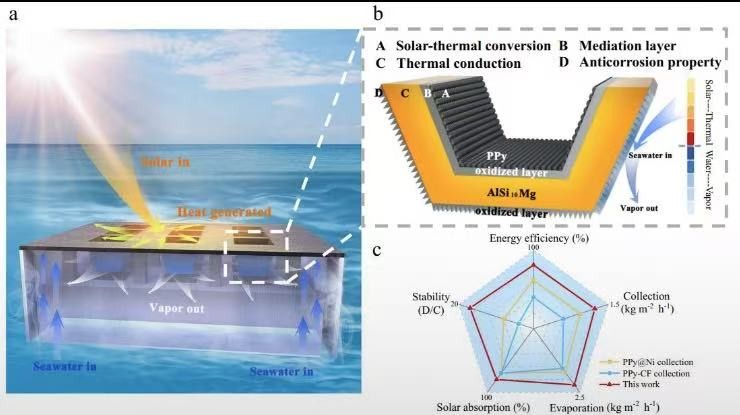
A study led by Prof. Steven WANG et al., published in Nature Communications introduces an innovative approach to solar-driven interfacial desalination aimed at addressing global freshwater scarcity with minimal carbon emissions. A 3D-printed concave-shaped solar evaporator paired with a self-floating freshwater collection setup was designed. This system achieves nearly 100% photothermal evaporation efficiency with a freshwater collection rate of 1.23 kg/m2/h under standard sunlight conditions. By leveraging 3D printing and double-sided surface modification, the evaporator facilitates highly efficient heat transfer, superior salt-resistance, and an expanded water-air interfacial area. Vapor is directed downward for collection without causing fouling, ensuring prolonged operational stability.
The developed evaporation system brings enhanced evaporation and freshwater collection rates compared to conventional methods, which possess superior corrosion resistance and stability through multilayer surface modification, as well as low-cost renewal of the water-intake layer for sustained performance. The design of a decoupled, hierarchical solar evaporator structure for optimized thermal conversion, and the implementation of a self-floating freshwater collection box with copper fins to improve condensation rates are essential contributions to development of next-generation sustainable, high-performance evaporating systems.
This research marks significant progress toward scalable, portable solar desalination solutions that are environmentally sustainable and economically feasible. The proposed system demonstrates potential for real-world applications, such as providing freshwater in remote or disaster-stricken areas, while reducing reliance on active energy sources and combating water scarcity challenges.